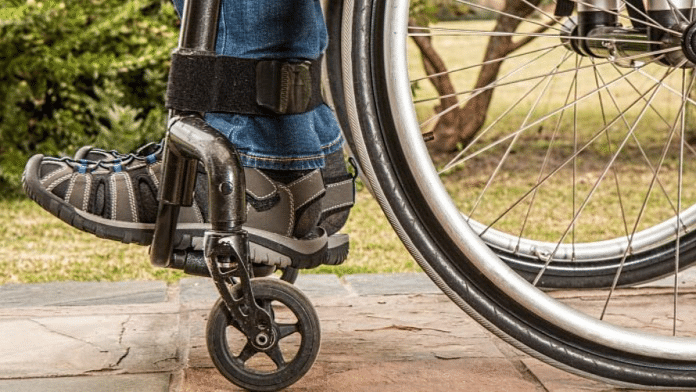It was a quiet Saturday when the storm broke. The National Medical Commission, after nearly nine months of silence and court-mandated deliberation, released its interim disability guidelines for MBBS admissions — just two days before NEET 2025 counselling was to begin on 21 July. I hadn’t even finished reading the document when my phone rang. On the line was a seasoned paediatrician, his voice sharp with anger.
One of his patients — a young student with partial hemiparesis — had cleared the NEET 2025 exam. He had studied harder than most, navigating a world that rarely bends for someone like him. But now, his future was to be decided not by his merit, but by a checklist. A self-declaration affidavit demanded answers to questions like:
“Can you bear weight and stand on your affected leg?”
“Can you climb up or go down stairs on your own?”
The doctor was furious. “What does this have to do with being a good doctor?” he asked. He was right.
On asking the wrong questions
This is a textbook example of what happens when policymakers ask the wrong questions — questions that conflate bodily symmetry with clinical skill, and confuse physical conformity with professional competence. Questions that reduce a life to a limb, and a calling to a staircase.
I know this too well — not as an observer, but as someone who lives it. I, too, have a mobility impairment. I cannot stand unsupported on one leg. Stairs have never been my friend. And yet, I serve in a medical institution. I have taught, practiced, published, and argued in the highest court of the land. These are not exceptions made in spite of my disability — they are the realities I live and deliver, every single day.
Last year, when the Supreme Court heard Om Rathod vs The Director General Of Health Services, I submitted a report that the bench later called “pivotal.” The judgment became a watershed moment: it rejected deficit-based models of disability, affirmed the right to reasonable accommodation, and directed the NMC to adopt a functional and inclusive approach. It asked for reform. It asked for imagination. It asked for justice.
Also read: Disability inclusion isn’t charity. Indian universities and faculty must act
The doctors they chose not to see
Not long after, NMC reached out to me — unofficially, of course. Not for structural change or inclusive policymaking, but for a list. A list of doctors with disabilities.
Given my experience in disability rights litigation, they knew I was connected to a network of professionals who had shattered every stereotype the system once held against them. So I responded — not just with names, but with stories.
I sent them ten.
A liver transplant surgeon who walks with an orthosis. A urologist who operates using a standing wheelchair. A blind psychiatrist whose insight transcends sight. A neurodivergent doctor who navigates the chaos of medicine with quiet brilliance.
Ten doctors who didn’t ask to be celebrated. They asked only to be seen.
But none — not one — was included in the final committee.
Instead, the same architects of the earlier, exclusionary guidelines returned. But there was one new inclusion — a doctor from an Institution of National Importance with a physical disability. When I saw his name, I hoped.
But even he endorsed the screening-out criteria: “Can you climb stairs? Can you stand on your affected leg?”
The irony was painful. He couldn’t do those things either. And yet, he had approved their use to exclude others.
I understand why.
In medical college, I, too, once believed that my body was the problem. The curriculum, rooted in the medical model of disability, framed people like me as patients, not peers. My impairment wasn’t a variation — it was a flaw to be fixed.
It took years — and reading the UN Convention on the Rights of Persons with Disabilities (UNCRPD) — to unlearn this. The social model of disability shifted everything. It didn’t ask what is wrong with you? It asked, what is wrong with the environment that excludes you? That question was radical. And healing.
It’s why when former Chief Justice of India DY Chandrachud ruled in the Om Rathod case, he didn’t stop at asking for doctors with disabilities on expert panels. He demanded experts in disability justice.
Because lived experience alone isn’t enough. Without critical consciousness, it risks replicating the very oppression it seeks to escape. This was also the reason the Supreme Court ordered training of all 16 medical boards with doctors with disabilities.
Also read: DPDP Act offers no special protection for disability data. It leaves PwDs vulnerable
The guidelines we got
What we received on 19 July is not reform. It’s a ghost of the past.
The interim guidelines still ask whether a student can climb stairs, but not whether the college has a ramp. They ask whether a student can bear weight, but not whether the system can bear the weight of its own prejudice.
Rights delayed — or disguised as gatekeeping tools — are rights denied.
The NMC had a chance to do better. It could have asked better questions. It could have brought in the right people. It could have listened to the doctors who redefined medicine by refusing to be erased.
It didn’t. And that silence speaks louder than any announcement.
In the end, it’s not just disabled students being screened out, but also the possibility of a more humane, just, and inclusive medical education system.
And that is a diagnosis the nation can no longer afford to ignore.
Dr Satendra Singh is a medical doctor and Director-Professor at University College of Medical Sciences & GTB Hospital, New Delhi. He tweets @drsitu. Views are personal.
(Edited by Aamaan Alam Khan)






